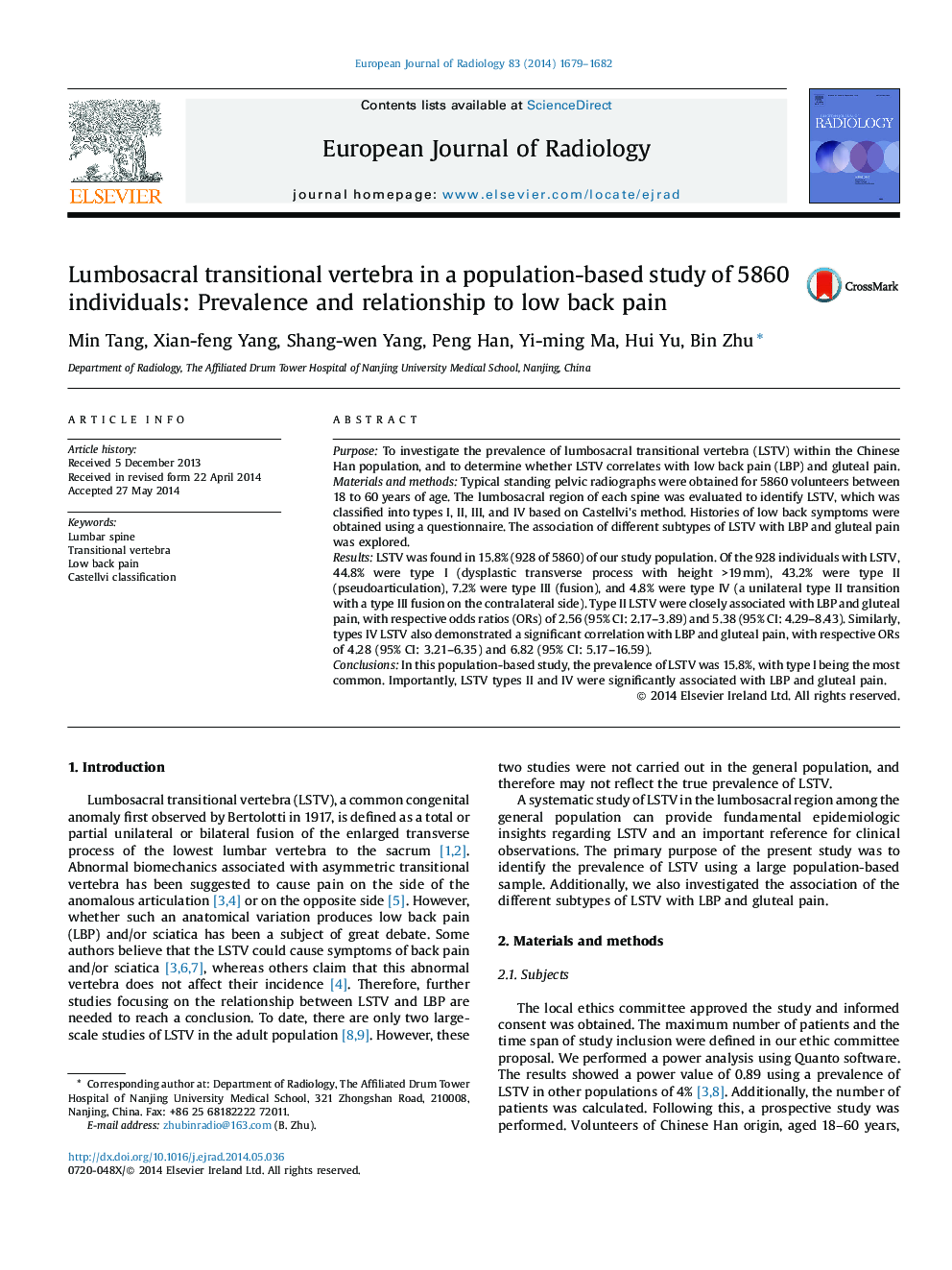| Article ID | Journal | Published Year | Pages | File Type |
|---|---|---|---|---|
| 4225463 | European Journal of Radiology | 2014 | 4 Pages |
PurposeTo investigate the prevalence of lumbosacral transitional vertebra (LSTV) within the Chinese Han population, and to determine whether LSTV correlates with low back pain (LBP) and gluteal pain.Materials and methodsTypical standing pelvic radiographs were obtained for 5860 volunteers between 18 to 60 years of age. The lumbosacral region of each spine was evaluated to identify LSTV, which was classified into types I, II, III, and IV based on Castellvi's method. Histories of low back symptoms were obtained using a questionnaire. The association of different subtypes of LSTV with LBP and gluteal pain was explored.ResultsLSTV was found in 15.8% (928 of 5860) of our study population. Of the 928 individuals with LSTV, 44.8% were type I (dysplastic transverse process with height >19 mm), 43.2% were type II (pseudoarticulation), 7.2% were type III (fusion), and 4.8% were type IV (a unilateral type II transition with a type III fusion on the contralateral side). Type II LSTV were closely associated with LBP and gluteal pain, with respective odds ratios (ORs) of 2.56 (95% CI: 2.17–3.89) and 5.38 (95% CI: 4.29–8.43). Similarly, types IV LSTV also demonstrated a significant correlation with LBP and gluteal pain, with respective ORs of 4.28 (95% CI: 3.21–6.35) and 6.82 (95% CI: 5.17–16.59).ConclusionsIn this population-based study, the prevalence of LSTV was 15.8%, with type I being the most common. Importantly, LSTV types II and IV were significantly associated with LBP and gluteal pain.
